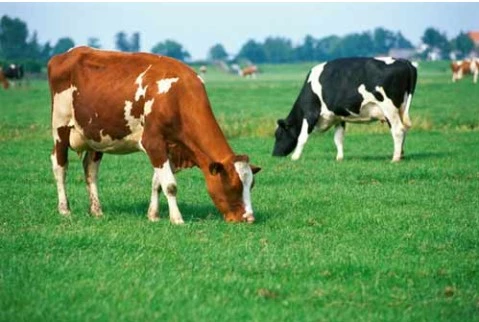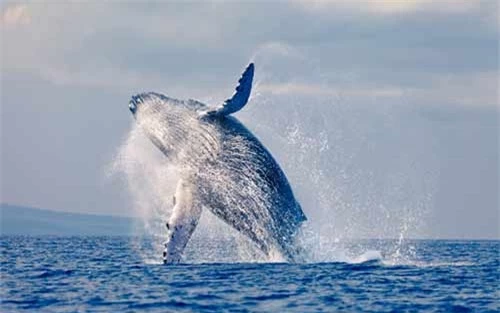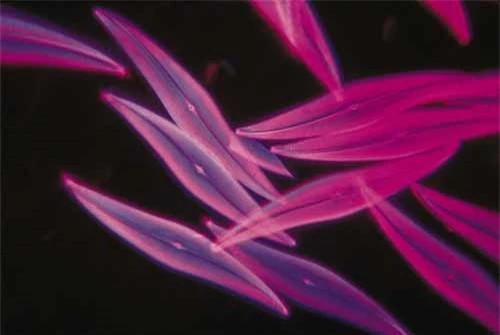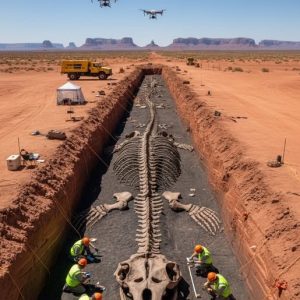Decoding the ‘shocking’ mystery of the Bermuda Triangle / The mystery inside the temple of the god Xipe Totec
1. Cows always turn their heads toward the poles when eating:
A group of scientists, after studying thousands of images of cows taken from Google Earth satellites, discovered a detail that no one had noticed before: Cows always stand along the axis connecting the two poles of the Earth when they are eating grass or resting. This phenomenon remains unchanged regardless of any external influences, such as wind.

Although there are animals that have the ability to navigate like a compass, this is the first time that such an ability has appeared in a large mammal. Another strange thing is that the closer they are to the poles, the less accurate their ability to navigate. Scientists are also not sure if this phenomenon is related to navigation like in nautical navigation or just the result of watching out for predators. However, their actions may have a certain purpose because cows on all six continents have this tendency.
2. Why do land animals go to the sea to live:
As we know, many species that live in the sea have come to land and evolved into land animals. They have developed limbs to adapt to living conditions on land. But why some species, such as the ancestors of whales and seals, go to the sea to live is still not explained.
Basically, it is more difficult for land animals to evolve into the sea than the other way around, because learning to swim takes a lot of energy. It was much later in their evolution that they developed the ability to swim and steer much more efficiently with their tails instead of using their legs to kick. The question here is why did they decide to go into the sea in the first place? This is the biggest evolutionary mystery that modern science still cannot solve.

3. Over 7000 different substances in plants:
Plants often secrete substances that have very interesting (and sometimes scary) effects on animals that eat them. These substances are collectively called alkaloids, of which morphine is a very common pain reliever. There are currently about 7000 different alkaloids in plants and no one knows why there are so many.

These substances produce a wide range of reactions in animals when they eat them. In the case of the poppy plant, which secretes morphine, experts believe that this substance helps animals that eat it to repel predators. However, the reason why morphine, an effective pain reliever, has this ability is still a mystery to science.
4. Why are flowers everywhere:
Flowering plants are a class of plants known scientifically as angiosperms. If you pay attention, you will see that they are present almost everywhere. Surprisingly, about 400 million years ago, their numbers were not as high as they are now. The reason is that at that time, flowering plants invaded other types of plants at a very fast rate. As a result, they now account for 90% of all plant species.

Darwin called this phenomenon a “monstrous mystery.” The rapid evolution of flowering plants in such a short time completely contradicts his theory of gradual evolution through natural selection. Because dead plants do not leave fossils, it is difficult to determine how one plant suddenly appeared and overpowered all other species.
5. The closer you get to the equator, the more diverse life there is:
If you move from colder regions of the Earth toward the equator, you will find much more diverse life nearby. About 200 years ago, Prussian explorer Alexander von Humboldt was the first to discover that biodiversity increases as you move closer to the equator. When you hear about a deadly virus outbreak in Africa or South America, the reason often given is that the health care in these developing countries is too poor. However, not everyone knows that viruses and bacteria that cause disease are more active and diverse in southern countries than in the north.

There are about 36 hypotheses in the world to answer this question. However, with the number of living organisms that we know, it is almost impossible to synthesize all the existing hypotheses into one and draw a final conclusion.
6. Paradox about the plankton class:
Plankton is a class of organisms that often live in large bodies of water with many different subspecies. Basically, they are plants that float on the water surface. They are present in all water systems around the world in very large numbers and diverse in species. With limited resources, a large number of different organisms cannot coexist in an ecosystem without destroying each other. But somehow, they still live “in harmony” with each other.

This phenomenon does not only occur in plankton. Science has discovered a paradox called the “paradox of enrichment”. Accordingly, an excess of resources will reduce species diversity. For example, in waters with more nutrients, species diversity will decrease compared to waters with less nutrients. Normally, when there are more nutrients, species diversity should also increase, because then there is no more competition for food.
7. The mystery of the aggressive Argentine ants:
On the surface, Argentine ants look like other common ants. But perhaps they are the only species, not counting alien species, that have successfully “invaded” 3 continents. All 3 Argentine ant “super colonies” in Europe, South America and Asia share the same genetic characteristics. Because the geographical range of these 3 ant colonies is so large, their social structure has given scientists a headache.

When they meet, Argentine ants immediately recognize each other as their own species, while they are very aggressive when they meet other ants. In addition, their genetic code today has not changed much compared to thousands of years ago. This is a strange phenomenon because any creature that lives outside its natural environment will evolve very quickly. Science still cannot explain why they can maintain such a large colony across continents without evolving into a different form.
8. The mysterious ancestor of humans:
Human ancestors have been thoroughly studied for many years. Thanks to that, we know very well about our origins. However, recently scientists have discovered traces of an extinct species that could be another ancestor of humans.

When scientists studied the DNA of Denisovans (a species of human closely related to Neanderthals), they discovered traces of a mysterious species that science has not yet been able to identify. Denisovans themselves are also shrouded in certain mysteries, but at least we know who they were and where they came from. But we cannot conclude the same about the newly discovered species. This species may have interbred with Denisovans 30,000 years ago and left a very distinct mark on their DNA, which is a unique set of teeth, not found in any other species on Earth.
9. Creatures that live without oxygen:
Almost all creatures on Earth live on oxygen. However, there is a creature deep at the bottom of the Mediterranean Sea that still lives without oxygen.

While some bacteria and single-celled organisms can survive without oxygen, this has never been done in complex or multicellular animals. The newly discovered creature comes from the Loricifera phylum, a class of microorganisms that once relied on oxygen, but has adapted to living without it and instead subsisting on sea salt. To date, we have no clue as to how it evolved.








